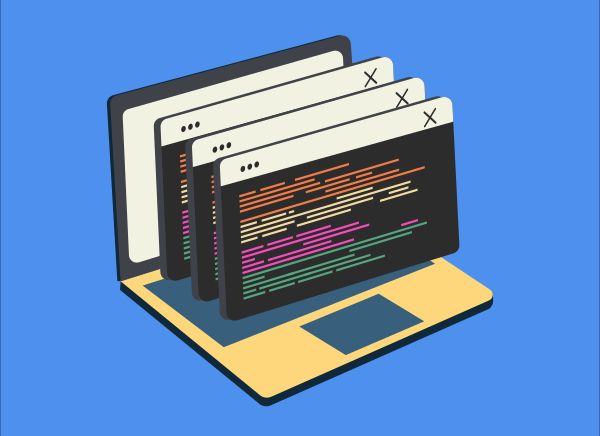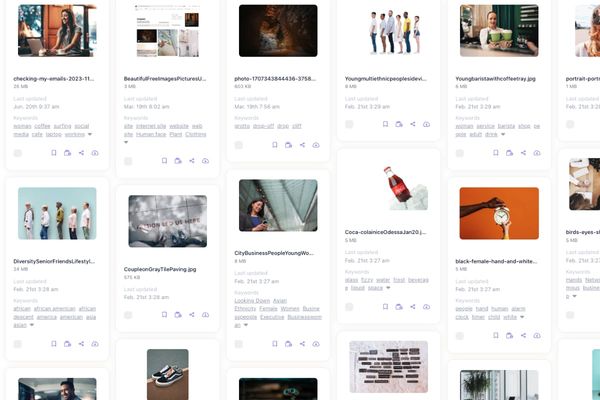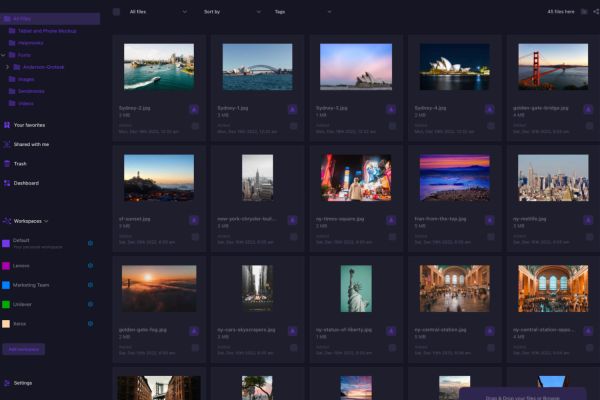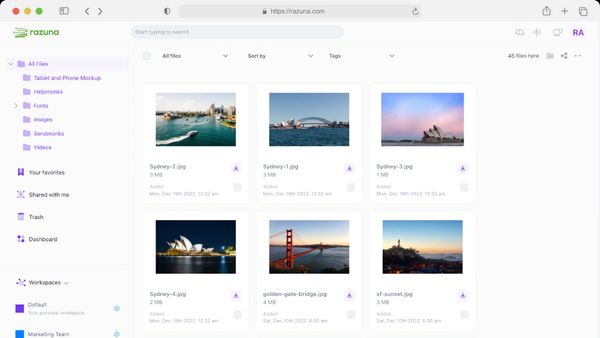
What Is Digital Asset Storage?
What is digital asset storage? This guide to digital asset storage has all the answers. Learn how to implement digital asset storage for all your teams.
Read nowDigital Rights Management (DRM) has emerged as a crucial aspect of managing digital assets today. As the digital sphere engulfs your life with a torrent of information, entertainment, and digital products, the need to safeguard intellectual property rights has grown increasingly evident.
But, evolving technology brings novel challenges—especially when maintaining online assets' privacy, security, and ownership. In this article, we'll dive into the complexities of DRM, exploring its use cases and benefits.
Ultimately, you will gain a comprehensive grasp of DRM's functions and potential for success.
Digital Rights Management is a systematic approach that involves the use of processes, policies, and technologies that regulate the access to and usage of copyrighted digital content.
DRM aims to protect the rights of content creators, publishers, and copyright holders. It does this by encouraging the proper distribution, management, and control of digital assets, such as ebooks, music, videos, and software.
This system ensures that only authorized users can access and consume the digital content in a way that aligns with the creator's intentions. Through DRM, creators can limit copying, sharing, modification, and even the number of devices on which users can access content.
DRM technology includes encrypting digital content, watermarking, and access control mechanisms such as digital certificates, passwords, and brand assets. Some systems may also include monitoring software or digital rights language (DRL) that further restricts users from unauthorized copies or sharing.
Ultimately, DRM provides a secure environment for creators to protect their intellectual property, allowing them to control how their content is used. In turn, they get increased autonomy and control over their work, enabling them to optimize revenue generation more effectively.
DRM also helps to safeguard copyright holders against piracy by making it challenging for individuals to duplicate and disseminate digital material illicitly.
DRM uses encryption, license management, and digital watermarking techniques to ensure that only authorized individuals who have acquired the necessary permissions use copyrighted content.
This protection mechanism prevents unauthorized copying, sharing, or distributing copyrighted material without the proper licenses. It works in different ways, including:
By encrypting digital content, DRM systems make it difficult for unauthorized users to access the content. A decryption key is required, which is typically only available to those who have purchased the content legally.
Digital content can be distributed with licenses that dictate how the content can be used, such as limitations on the number of devices or the time period in which it can be accessed.
This technique embeds a unique identifier or watermark within the digital content to trace its origin and track its usage, enabling copyright holders to identify unauthorized distributions.
Digital Rights Management (DRM) also works by limiting the usage of digital material disseminated over the internet. It does this by using technological measures such as encryption, key management systems, and tracking technologies to control access to and usage of copyrighted works.
You can use DRM to limit the number of copies a single user can make, curb how long a work may be accessed, or prevent forwarding or printing.
At the core of DRM is the rights holder, who sets up the rules to control access and usage. A user must first accept these terms to gain access to the content.
Subsequently, when a user attempts an action that goes outside of those set parameters, it is blocked or prevented. This is because DRM technology has locked in the rights owner's permission.
In a nutshell, DRM allows you to:

Below are some use cases for digital rights management:
DRM significantly contributes to the ebook and e-Learning sectors, safeguarding the intellectual property of writers, publishers, and academic establishments.
With DRM, you can protect ebooks from unauthorized copying, redistribution, or printing. Similarly, you can restrict e-Learning content like course modules, videos, and quizzes to only the students who have paid for the course.
Renowned music and video streaming services such as Spotify, Netflix, and Amazon Prime utilize DRM to guarantee that their content is exclusively accessible to subscribers.
DRM manages the streaming experience by limiting the number of devices, the quality of the audio or video streams, and the sharing capabilities supplied to authorized users.
Software companies rely on DRM to protect their products from illegal distribution and usage.
For example, software developers might utilize DRM to restrict the number of devices an individual can install their application on or necessitate users to input an activation code each time they wish to access the software.
Video game companies use DRM to protect their intellectual property and limit game access to authenticated users.
While some DRM solutions are designed solely to protect games from piracy, others offer additional features such as content delivery, version control, and analytics.
You can also use DRM in live event settings, such as during lectures or concerts.
For example, a rights holder may use DRM to gate access to an event's video stream or require a specific type of device for viewing. This safeguards the intellectual property of the rights owner and guarantees that solely authorized individuals can access the material.
Artists often use DRM to protect their digital artworks from unauthorized usage. With DRM, artists can set up rules limiting the types of uses, such as printing or sharing. At the same time, they grant access to only those users who have paid for the artwork.
The healthcare industry uses DRM to protect sensitive medical records from unauthorized access. By employing DRM solutions, healthcare providers can restrict and manage access to digital health records, ensuring that only authorized personnel can access the data.
The manufacturing industry uses DRM systems to manage the digital resources of a product.
For example, a company can use it to track and control the production of parts from suppliers, or to monitor usage in an assembly line.
The systems can also manage product licensing and authentication so customers only access goods when entitled to do so.
Additionally, DRM can ensure that all components are authorized and that intellectual property is not infringed upon.
Data protection is an integral part of digital rights management. By employing encryption, authentication, and various security measures, you can effectively thwart unauthorized access and misuse of data.
For example, DRM can ensure that confidential information is securely stored in a cloud environment and only accessed when authorized users have permission.
It can also help organizations ensure that private data is not shared with unauthorized parties.

DRM comes with a plethora of benefits, including:
The primary advantage of DRM lies in its ability to safeguard the intellectual property. Without it, pirated or stolen digital media could be shared and distributed freely across the internet, making it nearly impossible for original authors to profit from their work. Having systems in place acts as a digital gatekeeper, limiting access to authorized users and preventing mass copying and distribution.
DRM helps support monetization models like subscription-based services, pay-per-view, and rentals. It does this by limiting access to content behind a paywall. The paywall keeps unauthorized users from accessing the content, while authorized users can utilize it within their means.
By limiting access to digital media, DRM helps maintain user loyalty toward content creators and their associated services.
Digital Rights Management (DRM) offers substantial versatility to content creators. It allows you to govern your intellectual property rights and access to media. For example, you can control the number of times a file is accessed or the duration of access.
In addition, DRM also offers the ability to create different versions of your digital media with varying monetization models and access levels. This allows you to appeal to different audiences and better cater to their needs.
DRM not only prevents piracy but also allows content creators to give their customers fair usage rights when they purchase media. DRM helps enforce these rules so that the customer uses the media within the boundaries set by the content creator. This ensures that the customer gets fair usage of the content without any illegal activities taking place.
Robust DRM implementation enhances content security across devices, platforms, and users, safeguarding digital assets in the age of cyber threats. Encryption and authentication technologies help protect digital files from malicious attacks, keeping them safe from unauthorized access.
Consequently, companies dependent on digital content can guarantee data security and exclusive access for authorized users. This improved security helps prevent data breaches and other cyberattacks that can lead to costly company losses.
DRM helps improve user experiences by providing users with a hassle-free way to access content. By using DRM, businesses can give users an easy and secure way to purchase and stream digital media, eliminating the need for users to manually install or manage software. This makes it easier for customers to enjoy digital content without hassles or worries.
Furthermore, DRM minimizes the likelihood of copyright infringement by offering users legal means to access content without contravening any statutes. This helps protect both businesses and their customers from legal issues.
Digital Rights Management serves a vital function in protecting content creators' efforts, ingenuity, and intellectual property. It benefits both creators and consumers by ensuring fair compensation and secure access to digital content.
Understanding and respecting our digital rights becomes increasingly essential as the digital landscape becomes more complex and interconnected. By using a leading brand asset management platform like Razuna, you can safeguard your content while collaborating effectively with your team.

What is digital asset storage? This guide to digital asset storage has all the answers. Learn how to implement digital asset storage for all your teams.
Read now
All files that your business uses is a type of digital asset. This guide explains the various types, what makes them crucial, and how best to manage them.
Read now
A digital asset management strategy is essential for your brand. This guide explores how to maximize your brand's potential with this powerful combination.
Read now
File organization is essential for any business. Here are 10 of the best file organization software options for businesses of all types to consider in 2024.
Read now
(each free accounts comes with 500 GB space)
